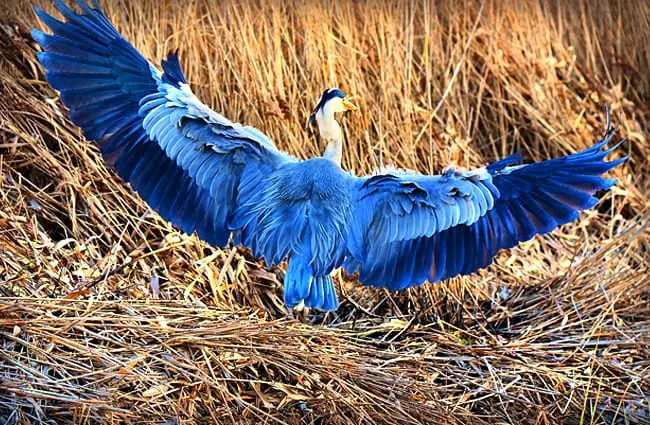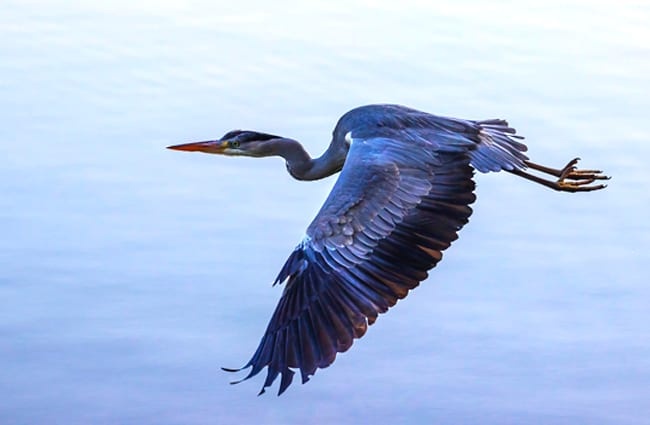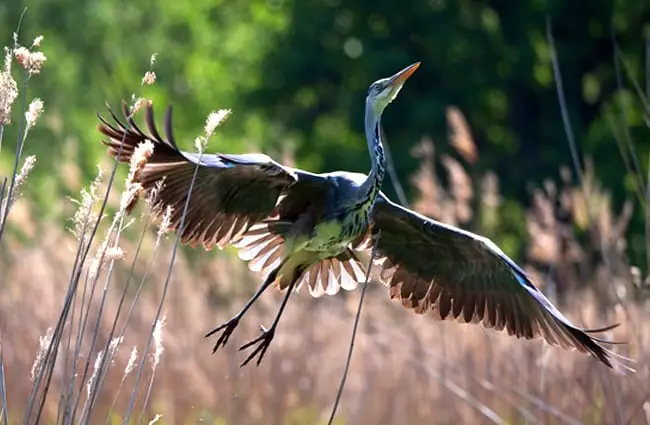The Elegant World of Herons
Herons, those graceful long‑legged wading birds, are a familiar sight around the world’s wetlands, rivers, and coastlines. More than just picturesque figures, herons represent a fascinating lineage of birds with a rich evolutionary history, diverse behaviors, and a crucial role in the ecosystems they inhabit. This guide delves into the world of herons, exploring their biology, behavior, and interactions with the environment and humans.

What Exactly Is a Heron?
The name “heron” does not refer to a single species but rather to a diverse family of birds—Ardeidae. There are 66 recognized species of herons, egrets, and bitterns within this family, varying greatly in size, color, and habitat. Most herons share key characteristics: long legs and necks, spear‑like bills, and a generally slender build. These features are perfectly adapted for their primary foraging strategy—patiently waiting and then swiftly striking at unsuspecting fish, amphibians, and other aquatic prey.
A Glimpse into Heron Evolution
The evolutionary story of herons stretches back millions of years. Fossil evidence suggests that ancestors of modern herons existed as early as the Eocene epoch, around 56 to 34 million years ago. These early birds were likely less specialized than their modern counterparts, gradually evolving the distinctive features we see today in response to changing environments and prey availability. The Ardeidae family diversified over time, with different species adapting to various wetland habitats around the globe. Tracing their lineage through fossil records and genetic analysis provides valuable insights into avian evolution and biogeography.
Where Do Herons Live?
Herons are remarkably widespread, found on every continent except Antarctica. They thrive in a variety of wetland environments, including marshes, swamps, mangrove forests, lagoons, and the edges of lakes and rivers. Some species, like the cattle egret, have even adapted to drier environments, often foraging in pastures alongside livestock. The distribution of specific heron species is determined by factors such as climate, prey availability, and the presence of suitable nesting sites.

What’s on the Menu for a Heron?
The diet of a heron is largely dictated by its size, habitat, and the available prey. Fish are a staple for many heron species, but their diet can also include amphibians, reptiles, insects, crustaceans, and even small mammals and birds. Herons are opportunistic feeders, meaning they’ll take advantage of whatever prey is most readily available. They employ several hunting strategies, including standing motionless and waiting for prey to come within striking distance, actively stalking prey in shallow water, or even dropping down from a perch to snatch unsuspecting victims.
Heron Behavior: More Than Just Fishing
Beyond their hunting prowess, herons exhibit a range of fascinating behaviors. They are generally solitary hunters but may congregate in colonies during the breeding season. These colonies, known as heronries, can be surprisingly large, with dozens or even hundreds of nests clustered together in trees or shrubs. Herons communicate using a variety of vocalizations, body postures, and displays, often involving elaborate feather displays during courtship. They also engage in allopreening, a social bonding behavior where individuals groom each other’s feathers.

Love, Courtship, and Raising a Family
Heron courtship rituals are often elaborate and visually stunning. Males may display bright plumes, engage in aerial acrobatics, or offer gifts of nesting material to attract females. Once a pair bond is formed, they work together to build a nest, typically a bulky platform of sticks and vegetation. The female lays a clutch of several eggs, and both parents share incubation duties. Young herons, known as chicks, are altricial, meaning they are born helpless and rely entirely on their parents for food and care. It takes several weeks for the chicks to fledge, or develop the feathers necessary for flight, and even longer for them to reach full maturity.
Herons and the Ecosystem: A Vital Role
Herons play an important role in maintaining the health of wetland ecosystems. As predators, they help control populations of fish, amphibians, and other aquatic organisms. Their feeding activities can also influence the distribution and abundance of prey species. Furthermore, heron nests provide habitat for other birds and animals, and their droppings contribute nutrients to the ecosystem. The presence of healthy heron populations is often an indicator of a healthy wetland environment.
Herons and Humans: A Complex Relationship
Throughout history, herons have held cultural significance for many human societies. They are often depicted in art, folklore, and mythology, symbolizing grace, patience, and wisdom. In some cultures, herons are considered sacred animals. However, human activities have also posed threats to heron populations. Habitat loss, pollution, and overfishing have all contributed to declines in certain species. Conservation efforts, such as wetland restoration and responsible fishing practices, are essential to ensuring the long‑term survival of herons.

Spotting Herons in the Wild
If you’re hoping to observe herons in their natural habitat, here are a few tips: visit wetlands, marshes, and the edges of lakes and rivers. Look for tall, slender birds with long legs and necks. Be patient and observant, as herons are often well camouflaged. Use binoculars to get a closer view without disturbing the birds. Maintain a respectful distance and avoid approaching too closely.
Caring for Herons in Captivity
For zookeepers and wildlife rehabilitators caring for herons, providing a suitable environment is crucial. This includes a spacious enclosure with a water feature for bathing and foraging. The diet should consist of fresh fish, amphibians, and other appropriate prey items. Herons require plenty of space to move around and exercise, as well as opportunities for social interaction. Regular veterinary care is essential to monitor their health and prevent disease. Avoid overcrowding and minimize human contact, as herons are naturally shy and reclusive birds.
Fun Facts About Herons
- Some heron species can change the color of their plumage during the breeding season.
- Heron chicks often peck at their siblings in the nest to establish dominance.
- Herons possess a highly mobile neck joint that allows them to strike at prey with incredible speed and accuracy.
- The oldest known heron lived to be over 30 years old.
- Different species of heron employ a variety of hunting techniques, adapting their strategies to the environment.

A Legacy of Grace and Resilience
Herons are remarkable birds that have adapted and thrived in a variety of environments for millions of years. Their elegant appearance, graceful movements, and vital role in ecosystems make them a truly captivating species. By understanding and appreciating these magnificent birds, we can contribute to their conservation and ensure that they continue to grace our wetlands for generations to come.


![Red Angus Closeup of a beautiful Red Angus cowPhoto by: U.S. Department of Agriculture [pubic domain]https://creativecommons.org/licenses/by/2.0/](https://animals.net/wp-content/uploads/2020/03/Red-Angus-4-238x178.jpg)




![Red Angus Closeup of a beautiful Red Angus cowPhoto by: U.S. Department of Agriculture [pubic domain]https://creativecommons.org/licenses/by/2.0/](https://animals.net/wp-content/uploads/2020/03/Red-Angus-4-100x75.jpg)

